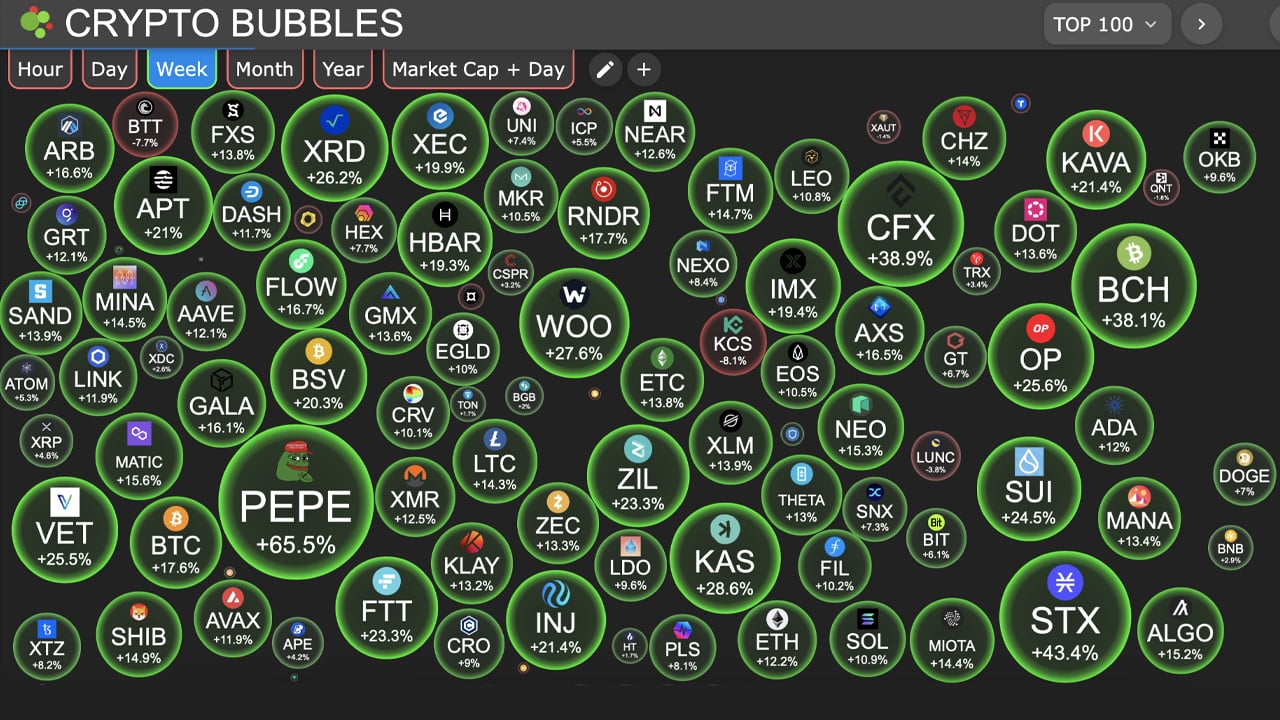During the past week, crypto assets increased in value by 9.62%, rising from $1.10 trillion to the current $1.21 trillion. Apart from the listed stablecoins, the top 20 crypto assets by market capitalization all experienced gains this week, as $110 billion was injected into the crypto economy.
Crypto Market Surges, Rally Led by Pepe, Stacks, Bitcoin Cash
At the time of writing, the crypto economy stands at $1.21 trillion, following a 9.62% increase this week. Metrics indicate that bitcoin (BTC) gained 18.1%, while ethereum (ETH) rose by 12.5%.
However, numerous other digital assets experienced significantly larger gains, as evident from cryptobubbles.net’s weekly data. According to the data, BCH, XRD, PEPE, WOO, ZIL, and VET all recorded double-digit gains.

The meme coin pepe (PEPE) experienced a significant 65% increase this week, while bitcoin cash (BCH) jumped over 38%. Pepe led the pack in terms of gains, while stacks (STX) rose by more than 41% over the past seven days.
Conflux (CFX) saw a jump of 40.4%, and kaspa (KAS) gained 26% during the same period. On the other hand, digital currencies such as bittorrent (BTT), kucoin (KCS), terra luna classic (LUNC), and quant (QNT) faced losses ranging from 2.2% to 7.9% this week.

Friday’s leaders in terms of 24-hour stats include FTT, which is up more than 14%; VET, up over 11%; BSV, up more than 8%; LEO, also up more than 8%; ZIL, up 7.6%; and BCH, up more than 6%.
Although, today’s 24-hour losses are led by PEPE and STX. PEPE shed 5.5%, while STX lost 9.8% during the last day. Bitcoin dominance remains high at 48.2%, and ETH’s market dominance stands at 18.6%, according to coingecko.com’s current data.
The crypto rally is believed to be driven by institutional interest and the involvement of major traditional finance (tradfi) giants. In the past week and a half, several spot bitcoin exchange-traded funds (ETFs) were filed, and a crypto exchange backed by Charles Schwab, Citadel Securities, and Fidelity Digital Assets was recently launched.
However, despite the so-called institutional interest, the global trade volume of the crypto economy has been low, and a few crypto businesses are still exhibiting signs of financial weakness.
 news.bitcoin.com
news.bitcoin.com
